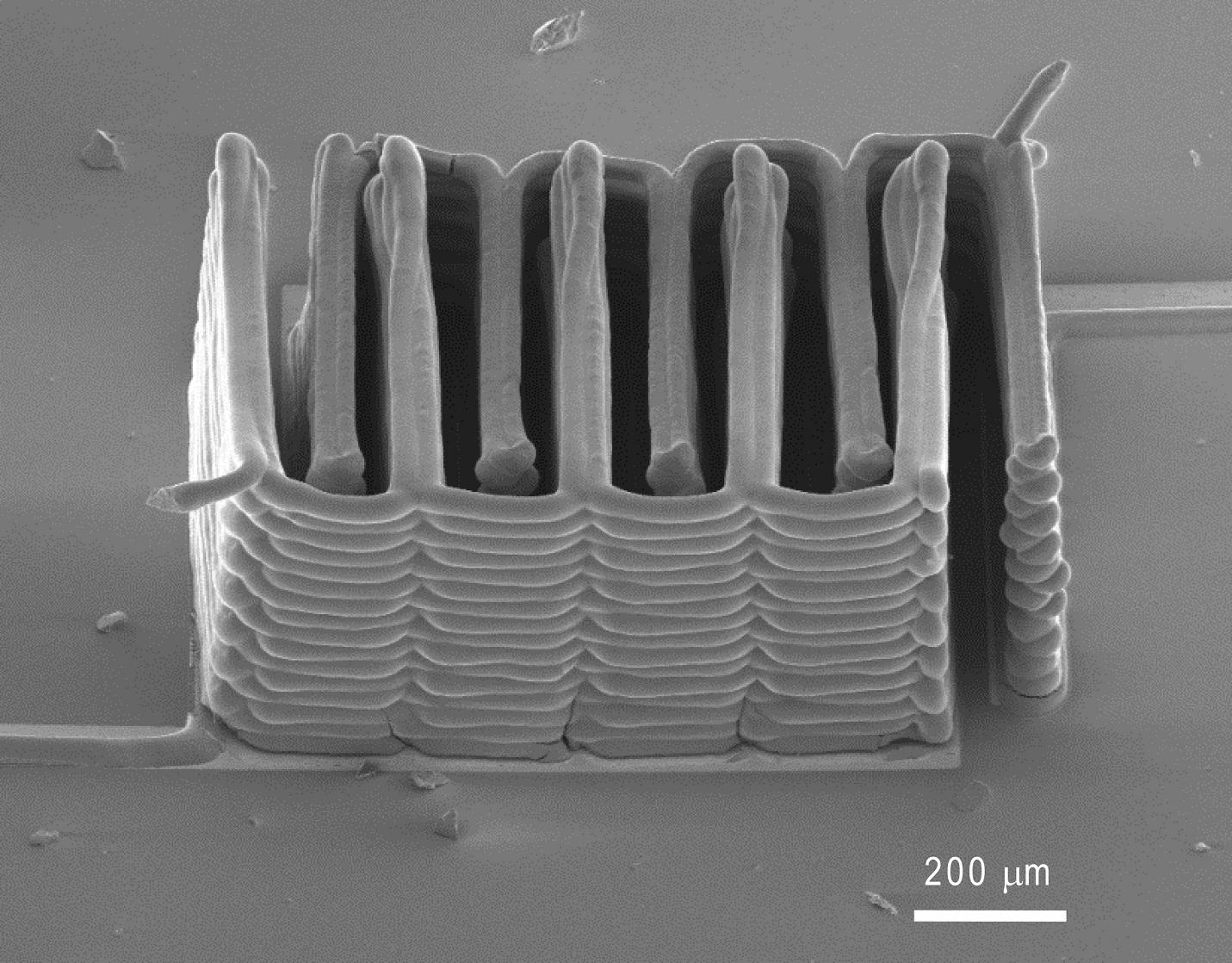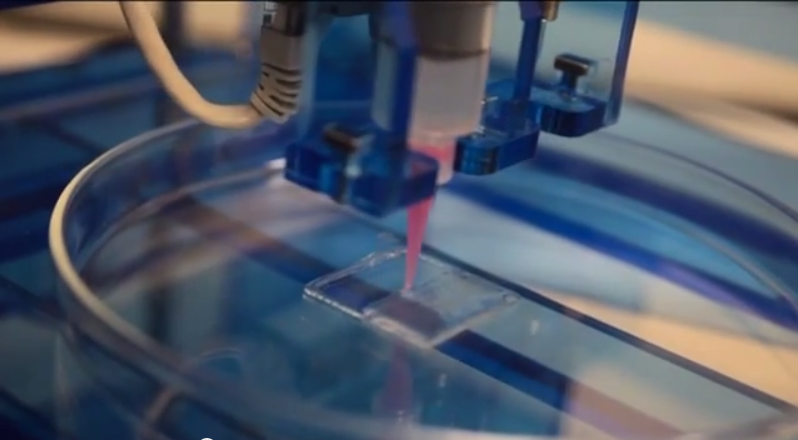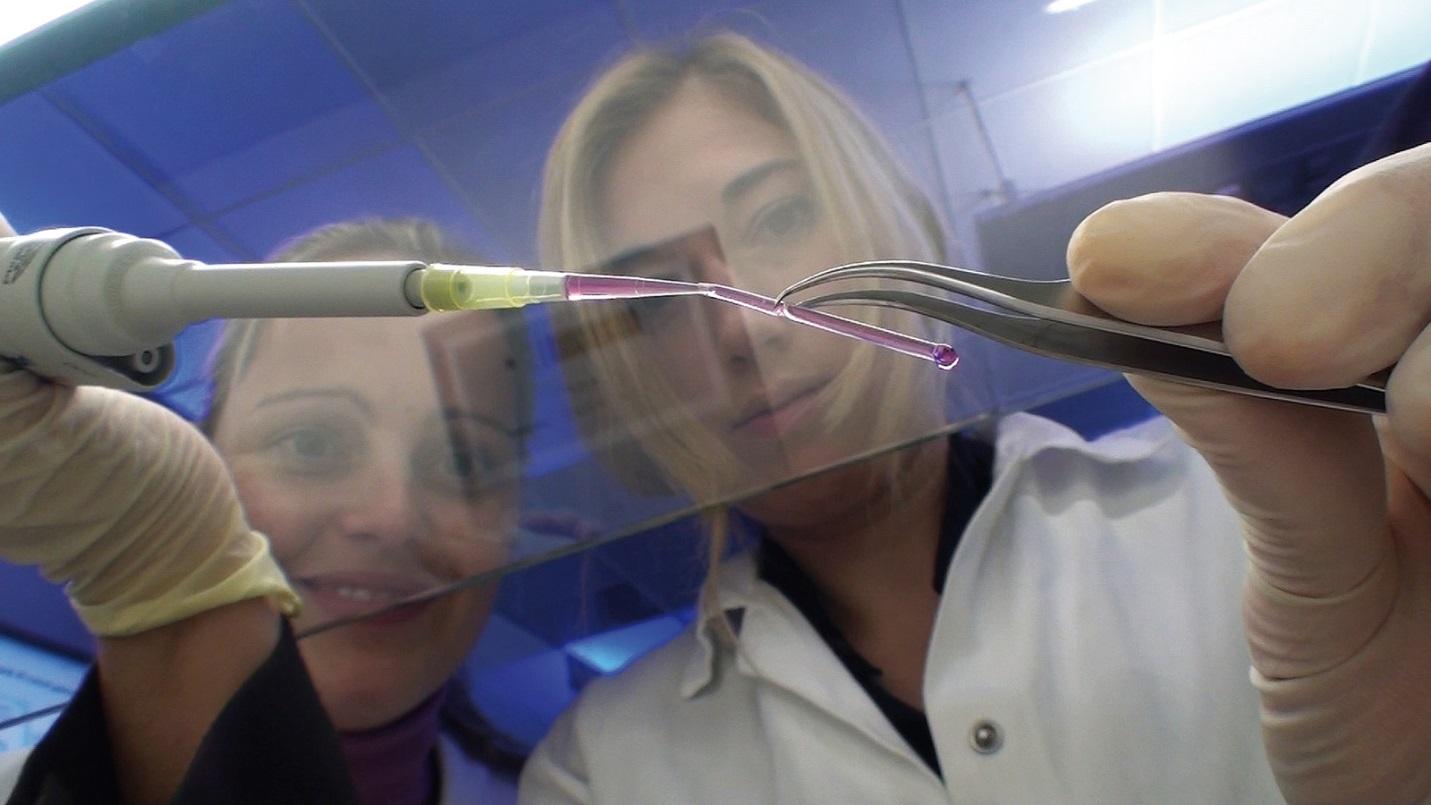How bones, vessels and organs are printed using 3D printers

At the dawn of rapid prototyping technology, it was widely believed that 3D printing was transforming the entire production, stimulating a consumer revolution, with the result that a printer would appear in every home. This has not yet happened, however, as it happened with many of the latest technologies, rapid prototyping has found its application in a completely different field - in medicine.
Article from the site Gizmodo.
Below we will discuss research and projects that represent the most interesting examples of the use of bioprinting and the use of computer-controlled machines for the assembly of biological matter, in which organic ink and ultrastrong thermoplastics are used. The range of application of bioprint is very wide - from the reconstruction of the main parts of the human skull to the printing of scaffolds - skeletons on which stem cells can develop into new bones. Read below for details.
Skulls

Osteofab is a product of Oxford Performance Materials . OPM first entered the market, selling raw high-performance polymer often used in the manufacture of medical implants - a thermoplastic called polyetherketketketone (PEKK), but over the past few years the company became the first to master the use of this material, primarily in additive manufacturing. . So, in February 2013, a 3D implant of a skull was installed on an American patient, the quality of which was approved by the FDA. The casting and printing were very carefully made to fit the patient's unique skull geometry, 75% of which is now an implant.
')
Leather

The main problem of creating new skin with the help of printing is the difficulty of recreating a particular shade from the entire possible spectrum. Given that our skin is unique, thin and subject to change, it is quite difficult to create an exact copy of it. There is a huge amount of interesting research on this topic, the essence of which cannot be put into a short story.
Nevertheless, here are two of the most interesting: scientist James Yoo from Uyek Forest University, using funds from a grant funded by the US Department of Defense, is working to create a machine that can print skin directly on people who are victims of burns. Another study is conducted by scientists from the University of Liverpool, who use carefully calibrated 3D scanners to obtain skin samples containing all of its smallest nuances, which will allow in the future to print more realistic implants.
The study is still ongoing, and the team plans to create a “skin sample base” with scanned examples to which you can connect from remote hospitals where they do not have the cameras needed to scan the skin of a particular patient. [ Gizmodo ; PhysOrg ]
Noses and ears

Creating prosthetic ears, noses and chins is often a painful, expensive and laborious process, both for the patient and for the physician himself. British industrial designer Tom Fripp over the past 5 years, in collaboration with scientists from the University of Sheffield, has been developing a cheaper and easier to manufacture facial prosthesis, which can be obtained using 3D printing. The process of creating such a prosthesis includes a 3D scan of the patient’s face (which is much less painful than his casting), modeling of the part to be replaced and its printing, which uses pigment, starch and medical silicone.
Such artificial limbs have an additional bonus: when it wears out (which ultimately happens anyway), it can be printed again, and in financial terms it will be very cheap. [ The Guardian ]
Prosthetic eyes

Fripp and the team at Sheffield University have published the results of testing a similar process for making eye prostheses. Eye prostheses are expensive, and since they are hand-painted, their production can take several months. Printers of Fripp Designs can produce 150 eye prostheses per hour, and details such as the color of the iris, the size and number of blood vessels can be easily changed depending on the needs of the patient. [ PhysOrg ]
Functional implants

As electronic devices — from drones to medical implants — become smaller, scientists struggle to create batteries for them that are small enough, but at the same time could provide the necessary charge. However, a team of engineers from Harvard University using a 3D printer is already printing microaccumulators the size of a grain of sand. Here is what the press release says:
“... the researchers created ink for the anode using nanoparticles of one lithium oxide compound, as well as ink for the cathode of nanoparticles of another type of this compound. The printer applied ink to the teeth of the two gold crests, thus creating a tightly connected structure of anodes and cathodes. The scientists then placed the electrodes in a tiny container and filled it with electrolyte solution to get a battery. ”
Over time, they will be able to charge medical implants, the use of which is constrained due to the existing problems of their charging. [ Harvard ]
Bones

Implants printed on a 3D printer, such as the jaw, have been around for several years. However, a small group of researchers is conducting an experiment, the purpose of which is to print real bones. For example, the scientist Kevin Sheakesheff from the University of Nottingham invented a bioprinter, creating matrices of polylactic acid and gelatin alginate, which are then covered with stem cells.
Implanted matrices will gradually dissolve and be replaced by a new growing bone: it will take about three months to complete the transformation of the bone. [ Forbes ]
Blood vessels and cells

We can already print organs , but there is a serious problem with the creation of a functioning circulatory system.
German scientist Gunter Tovar, who heads the Fraunhofer Institute for Interfacial Engineering and Biotechnology, is working on a project called BioRap. His task is to use a 3D printer to print blood vessels, during which a mixture of synthetic polymers and biomolecules is used. Printed circulatory systems are tested on animals - they are not yet ready to be introduced into the human body. However, in the end they will make it possible to transplant print organs. [ Fraunhofer Institute ]
How do you imagine the prospects of 3D printing with living and artificial materials replacing them for use in the human body? Soon will we be able to grow and replace full bodies, such as the liver? Share your opinion in the comments.
Source: https://habr.com/ru/post/455670/
All Articles